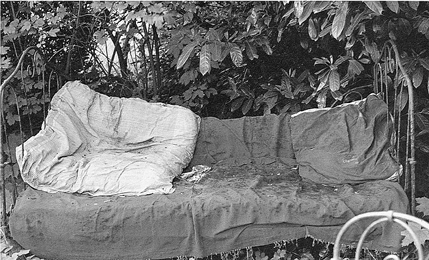The subversive cinema of Marguerite Duras, at the French Institute
Who’s afraid of Marguerite Duras? The doyenne of postwar French letters was many things to many people––innovator of the nouveau roman (which she repudiated), abettor of the modern French feminist movement, lifelong political interventionist, and later, scandalously sexed, dissolute older woman. Through the side door of the avant-garde, her novels including “The Sea-Wall” and “The Lover” have entered the modernist canon.
A decade after her death in March 1996, Duras’ extraordinary career in film remains among the least appreciated aspects of her legacy, a strange thing considering the extent of her engagement with cinema. The Duras series now running at the French Institute/Alliance Française is the first substantial New York survey of her films since a 1995 MoMA retrospective, which would prove to be a valedictory.
The series provides welcome opportunities to catch rarities like Peter Brook’s “Moderato Cantabile,” adapted from a scenario by Duras; “Le Camion,” her minimalist spoken-word slam with Gérard Depardieu; and the well-loved “India Song,” with Delphine Seyrig at her most languorously exquisite. “Nathalie Granger” (1972) exerts a special fascination, however, and if you can see only one of these programs, try not to miss it.
Duras’ attempted murder of the cinema takes form here as a subversive negation of linear dramatic action, synchronous sound, and other conventional realist codes. The “story” is an accretion of seeming non-events over the course of one day in a suburban household. Isabelle Granger (Lucia Bosé) and a nameless pal (Jeanne Moreau) are seen inhabiting a rather divine spread, actually Duras’ own home at Neauphle-le-Château near Paris. The man of the house—Dionys Mascolo, the real-life father of Duras’ son Jean—makes a breakfast cameo and the two girls, Nathalie (Valerie Mascolo) and Laurence (Nathalie Bourgeois), trot off to school.
The two women attend to mundane chores in near silence. In one long, mesmerizing sequence, they clear the dining table, their hands framed in close-up wiping away crumbs, building into a minor epiphany of rhythmic, meditative gesture. They wash and put away the dishes. Isabelle irons some laundry. On the soundtrack, bursts of a radio news broadcast about escaped killers at large in the surrounding forest alternate with the voice-over of the school headmistress, reporting Nathalie’s restive misconduct.
The camera wanders the corridors of the house, its stillness ruptured now and then with traffic noise from the world outside. The nameless friend, involved in her own barely-implied intrigue over a deported maid, picks the girls up from school. Nathalie tries to take the cat for a ride in a baby stroller, hurling it against a tree when the cat won’t comply. At the girls’ piano lesson, Nathalie stubbornly refuses, then reluctantly consents to practice; her keyboard refrain keeps repeating on the soundtrack. By some intuitive reckoning, Isabelle resolves not to send Nathalie away to boarding school, after all.
In one of his first film roles, Gérard Depardieu memorably appears as a door-to-door salesman who comes barging in. The glamazons listen cordially to his canned shtick, and though he keeps chattering, their imperturbable silence absorbs and neutralizes his phony cheer. Flustered, he blows his lines and starts stammering, before giving up. Later on, he returns to the house and at length discovers they’ve already got the exact model of washing machine he’s selling.
It would be possible to enjoy the film for its sensual properties alone, basking in the rumpled-chic setting—all checkerboard tiling, rattan chairs, and portes-fenêtres hung with dried lavender—and Ghislain Cloquet’s black-and-white cinematography, perfected though his collaboration with Bresson on “Au Hasard, Balthazar” and “Mouchette.” Not to mention the star magnetism of Lucia Bosé—fresh from her triumph in Liliana Cavani’s “The Guest”—and Jeanne Moreau, who would play Duras three decades later in Josée Dayan’s biopic “Cet amour-lá,” also included in the series.
But stopping there would be to miss the better part of Duras’ oppositional agenda. Her idiosyncratic feminism, for example, is expressed in “Nathalie Granger” as a kind of sorcery. After hubby’s gone to work and the kids to school, a black cat stretches in close-up—marking a shift into women’s time—and prowls throughout the film. The darkly attired dames solemnly kindle a bonfire in the garden. By the end, Depardieu’s salesman flees from the spectral sight of Isabelle gliding through the woods, and a passing mutt cowers at the eldritch aura enveloping the house.
Moreover, the women’s insistent silence figures as a rejection of the patriarchal tongue. Duras’ upbringing between cultures in French colonial Indochina––now Viet Nam––left her forever attuned to the expressive potential of language but also its capacity as a medium of domination. In “Nathalie Granger” she reduces speech to zero-degree dialogue while suggesting that music—emphasized in Nathalie’s piano instruction and repeatedly heard refrain—might offer women an alternative realm of affect and understanding beyond the oppressive structures inevitably encoded and reproduced in the word.
Depending as it does on cancellation, evacuation, and destruction, Duras’ approach to cinema has, perhaps unsurprisingly, claimed few adherents, although the importance of “Nathalie Granger” to Chantal Akerman’s feminist breakthrough “Jeanne Dielman,” made shortly afterward, seems clear enough. An uncompromising statement of female subjectivity and elegant, secretly anarchic rebuke to consumerist spectacle, “Nathalie Granger” is ripe for reappraisal as one of Duras’ finest achievements in film.
gaycitynews.com
































